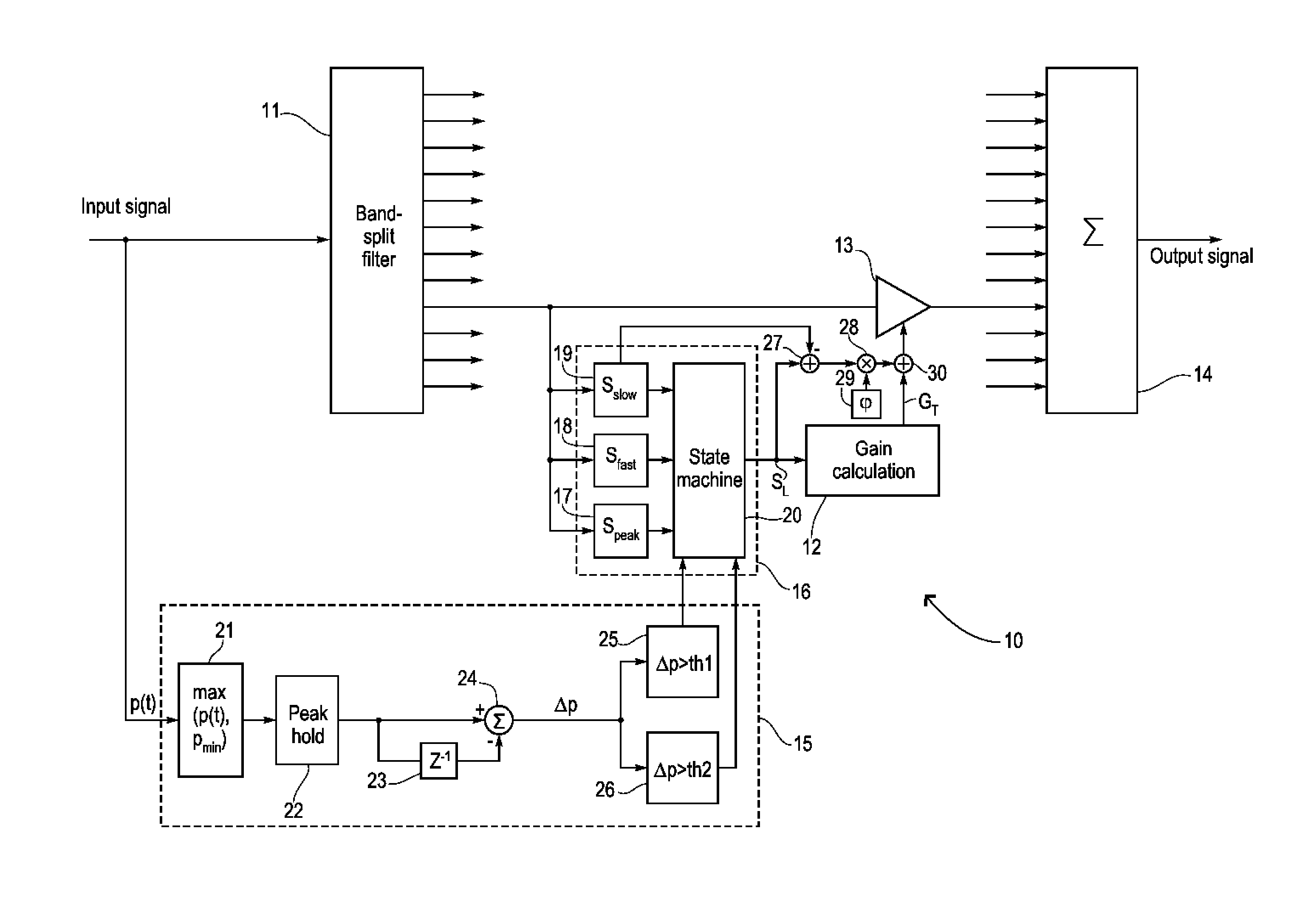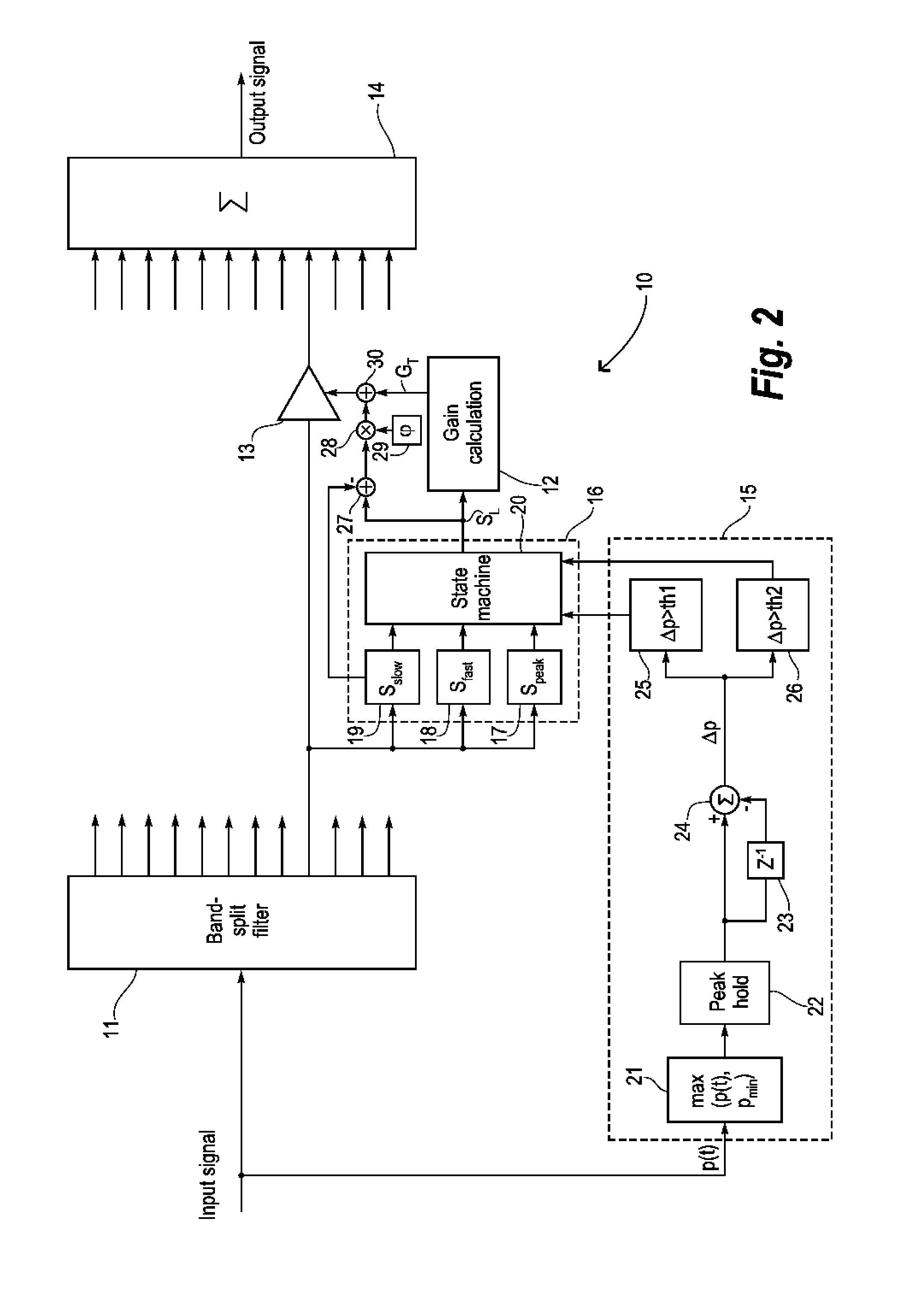Hearing aid and a method of detecting and attenuating transients
- Summary
- Abstract
- Description
- Claims
- Application Information
AI Technical Summary
Benefits of technology
Problems solved by technology
Method used
Image
Examples
Example
[0034]In FIG. 1 is shown a block schematic of a prior art transient detection and attenuation device 1 for a hearing aid. The input is connected to a band-split filter block 2, splitting the usable frequency range of the input signal into a plurality of frequency bands. Each frequency band of the plurality of frequency bands has its own detection and attenuation means each comprising an envelope calculation block 3, a non-speech slope detection block 4, an RMS calculation block 5, a speech characteristics input block 6, and a gain factor calculation block 7. Only one exemplified, arbitrary frequency band is shown in FIG. 1, the remaining frequency bands being suggested for clarity. The output of the detection and attenuation means 3, 4, 5, 6, 7, is a gain value, which is used to amplify the signal of the particular frequency band in an amplifier 8. The result of this amplification in the plurality of frequency bands is recombined in a band summation block 9, which is common to the plur
PUM
 Login to view more
Login to view more Abstract
Description
Claims
Application Information
 Login to view more
Login to view more - R&D Engineer
- R&D Manager
- IP Professional
- Industry Leading Data Capabilities
- Powerful AI technology
- Patent DNA Extraction
Browse by: Latest US Patents, China's latest patents, Technical Efficacy Thesaurus, Application Domain, Technology Topic.
© 2024 PatSnap. All rights reserved.Legal|Privacy policy|Modern Slavery Act Transparency Statement|Sitemap



